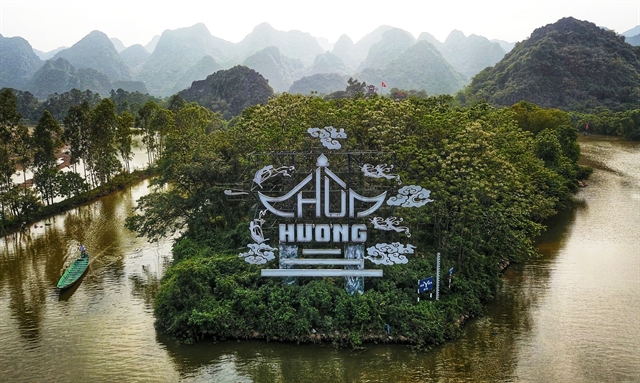 Life & Style
Life & Style


|
| The aerial view of Hương (Perfume) Pagoda in Hà Nội's Mỹ Đức District. The religious site will start to welcome pilgrims back on February 16 after a long closure due to the pandemic. VNA/VNS Photo Thành Đạt |
HÀ NỘI Hương (Perfume) Pagoda Complex in Hà Nội's Mỹ Đức District will open on February 16, according to a decision made by the municipal People’s Committee on Tuesday.
Earlier, the Mỹ Đức District Party Committee submitted a proposal to the Standing Committee of the Hà Nội Party Committee and the People's Committee on the reopening and receiving guests to the National Special Historical Relic Site and Landscape Complex, Hương Sơn - Hương Pagoda.
According to Secretary of the District Party Committee Nguyễn Ngọc Việt, the locality strictly suspended the organisation of the Hương Pagoda festival during Tết (Lunar New Year), which falls between 15th day of the first lunar month to 18th day of the second lunar month.
The situation of the COVID-19 pandemic in Hà Nội and in Mỹ Đức District has been basically under control and assessed as safe for tourism.
Implementing the "dual goal" of both effective prevention and control of the COVID-19 pandemic and socio-economic development, in addition to locals and pilgrims’ wishes, the local authority has worked with relevant departments to assess the situation and take measures to ensure the safety of visitors at the relic site in the new normal.
A specialised team will be established to evaluate and draw the experience of receiving tourists from February 16.
Vice Chairman of the Hà Nội People's Committee Chử Xuân Dũng assigned the Department of Culture and Sports to assume the prime responsibility and coordinate with the Department of Health in guiding Mỹ Đức District to implement the pandemic prevention and control measures.
Hương Sơn, 60km southwest of Hà Nội, consists of natural and cultural properties including Buddhist pagodas, caves and temples worshipping local agricultural gods. Aside from its religious significance, the complex also holds special values in terms of its ecosystem, landscape, architecture and history.
The complex, built under the reign of King Lê Thánh Tông (1442–1497), was destroyed by French colonialists but has been rebuilt with the support of the State, local residents and visitors. VNS